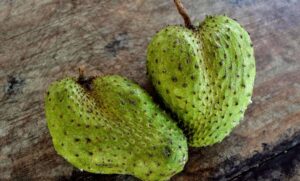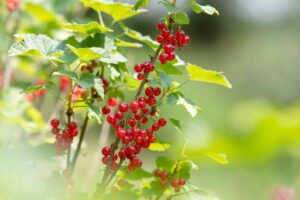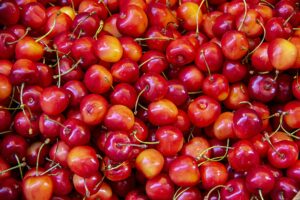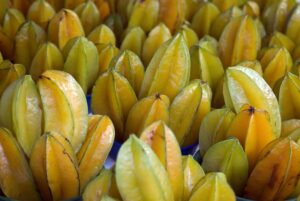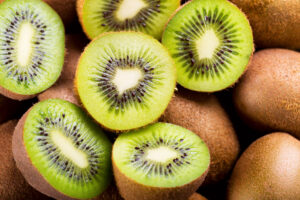How to Grow and Care for Star Apple: A Complete Guide
Star apple (Chrysophyllum cainito) is a tropical evergreen tree that produces delicious, sweet fruits with a distinctive star pattern when cut horizontally. Whether you’re working with a spacious garden or just a small pot on your patio, this guide will help you successfully grow and care for your own star apple tree.
Introduction to Star Apple
Star apple, also known as caimito or milk fruit, is native to the Caribbean and Central America but has become popular in many tropical regions worldwide. In the United States, it can be grown outdoors in USDA hardiness zones 10-11, particularly in Florida, Hawaii, and parts of Southern California.
These trees are not only valued for their delicious fruits but also make attractive ornamental additions to your landscape with their glossy, bicolored leaves that appear green on top and golden-bronze underneath.
Star Apple Varieties
Before you start growing, it’s helpful to know about the different varieties available in the US market:
| Variety | Fruit Color | Size | Flavor Profile | Best Growing Regions |
|---|---|---|---|---|
| Purple | Deep purple to black | 3-4 inches | Sweet with mild flavor | South Florida, Hawaii |
| Green | Pale green to yellow | 3-4 inches | Less sweet, more acidic | Protected areas in zone 10 |
| Haitian | Reddish-purple | 2-3 inches | Very sweet, rich flavor | South Florida, warmest areas |
| Cuban | Green to yellow | 4-5 inches | Creamy, sweet | South Florida, Hawaii |
| Trinidad Select | Purple | 3-4 inches | Less seeds, sweeter | Container cultivation, greenhouses |
Growing Star Apple from Seed
Starting star apple from seed requires patience but can be rewarding. Here’s how you can do it:

Seed Collection and Preparation
- Select ripe fruits from healthy trees.
- Cut the fruit open and extract the seeds.
- Clean the seeds thoroughly to remove any pulp.
- Soak the seeds in water for 24 hours to improve germination rates.
Planting the Seeds
- Prepare a well-draining potting mix with equal parts of peat moss, perlite, and garden soil.
- Plant seeds 1 inch deep in individual pots.
- Water thoroughly and place in a warm location (75-85°F).
- Cover with plastic wrap to maintain humidity.
According to the USDA Agricultural Research Service, star apple seeds typically take 2-8 weeks to germinate, and germination rates can vary significantly. You can find more detailed information on tropical fruit propagation techniques at https://www.ars.usda.gov/southeast-area/miami-fl/subtropical-horticulture-research/.
Seedling Care
Once your seeds have germinated:
- Remove the plastic cover gradually to acclimate seedlings to lower humidity.
- Place in bright, indirect light.
- Water when the top inch of soil feels dry.
- Begin fertilizing with a diluted liquid fertilizer after the first set of true leaves appear.
Growing Star Apple in Garden Pots
For many in the US, especially those outside zones 10-11, container growing is the best option for star apple trees.
Choosing the Right Container
- Select a pot at least 20 inches wide and deep to start.
- Ensure the container has several drainage holes.
- Use a high-quality potting mix formulated for fruit trees or tropical plants.
Potting Procedure
- Place a layer of gravel at the bottom of the pot for drainage.
- Fill the pot partially with potting mix.
- Position your star apple seedling or small tree at the same depth it was previously growing.
- Fill around the root ball with soil and press gently to remove air pockets.
- Water thoroughly after planting.
Container Care Requirements
- Position in a location that receives 6-8 hours of sunlight daily.
- Protect from strong winds which can damage foliage.
- Water when the top 2 inches of soil becomes dry.
- Fertilize every 2-3 months with a balanced, slow-release fertilizer.
- Repot every 2-3 years as the tree grows.
Outdoor Planting and Care
If you’re fortunate enough to live in a suitable climate zone, you can plant your star apple directly in your garden.
Site Selection
- Choose a location with full sun to partial shade.
- Ensure good drainage and protection from strong winds.
- Allow adequate space for mature size (25-100 feet tall, depending on variety).
- Maintain at least 20 feet distance from structures and other trees.
Planting Instructions
- Dig a hole twice as wide as the root ball and equally deep.
- Mix the native soil with organic compost at a ratio of 3:1.
- Place the tree in the hole at the same depth it was previously growing.
- Backfill with the soil mixture and tamp down gently.
- Create a watering basin around the tree.
- Apply 2-3 inches of mulch, keeping it away from the trunk.
Watering Requirements
- Water deeply immediately after planting.
- For newly planted trees, water 2-3 times weekly for the first month.
- Gradually reduce to once weekly as the tree establishes.
- During dry periods, increase watering frequency.
The National Institute of Food and Agriculture provides excellent resources on tropical fruit tree irrigation practices suitable for the US climate at https://nifa.usda.gov/topics/plant-health.
Seasonal Care and Maintenance
Spring Care
- Apply a balanced fertilizer (10-10-10) in early spring.
- Increase watering as temperatures rise and growth resumes.
- Check for pest issues as insects become active.
Summer Care
- Monitor soil moisture closely during hot weather.
- Provide afternoon shade if temperatures consistently exceed 95°F.
- Apply a layer of mulch to retain soil moisture and reduce weeds.
Fall Care
- Reduce fertilization as growth slows.
- Prepare container plants for winter by moving to protected areas.
- Prune lightly to remove any damaged branches.
Winter Care
- For outdoor trees in zone 10-11, reduce watering during cooler months.
- Protect from unexpected frost by covering with frost cloth if temperatures drop below 32°F.
- For container plants, bring indoors or place in a greenhouse if temperatures fall below 40°F.
Pruning and Training
Formative Pruning
- Begin shaping young trees in their second year.
- Remove competing leaders to establish a central trunk.
- Prune to create a balanced framework of 3-5 main branches.
Maintenance Pruning
- Remove dead, damaged, or diseased branches any time of year.
- Thin interior branches to improve air circulation.
- Control height through judicious top pruning if desired.
- Best time to prune is late winter before spring growth.
Pest and Disease Management
Common Pests
- Scale insects – Treat with horticultural oil sprays.
- Fruit flies – Use fruit fly traps and harvest fruit promptly.
- Mealybugs – Remove with cotton swabs dipped in alcohol or apply insecticidal soap.
Disease Prevention
- Anthracnose – Improve air circulation and avoid overhead watering.
- Root rot – Ensure excellent drainage and avoid overwatering.
- Sooty mold – Control aphid populations, which excrete the honeydew that leads to sooty mold.
Harvesting and Enjoying Star Apple

When to Harvest
- Fruits are typically ready 4-5 months after flowering.
- Look for slight softening and full color development.
- Green varieties turn yellowish-green when ripe.
- Purple varieties deepen to an almost black purple.
Harvesting Technique
- Use pruning shears or scissors to cut the fruit with a short stem attached.
- Handle gently to avoid bruising.
- Harvest early in the morning for best flavor.
Post-Harvest Handling
- Allow fruits to fully ripen at room temperature if picked slightly early.
- Store ripe fruits in the refrigerator for up to one week.
- Wash thoroughly before consuming.
Culinary Uses
Star apple can be enjoyed in many ways:
- Fresh eating – Cut horizontally to reveal the star pattern and scoop out the sweet pulp.
- Smoothies and milkshakes – Blend pulp with milk and other fruits.
- Desserts – Use in custards, ice creams, and puddings.
- Jams and preserves – Cook with sugar and lemon juice for delicious spreads.
- Fruit salads – Mix with other tropical fruits for exotic combinations.
Propagation Beyond Seeds
While growing from seed is common, other propagation methods yield faster results:
Air Layering
- Select a healthy branch that’s at least pencil-thick.
- Remove a 1-inch ring of bark around the branch.
- Apply rooting hormone to the exposed area.
- Cover with damp sphagnum moss and wrap with plastic.
- Once roots form (usually 2-3 months), cut below the roots and pot the new plant.
Grafting
- Use star apple seedlings as rootstock.
- Collect scions from a desirable variety during dormant season.
- Employ whip and tongue or cleft grafting techniques.
- Protect the graft union until healing occurs.
Troubleshooting Common Issues
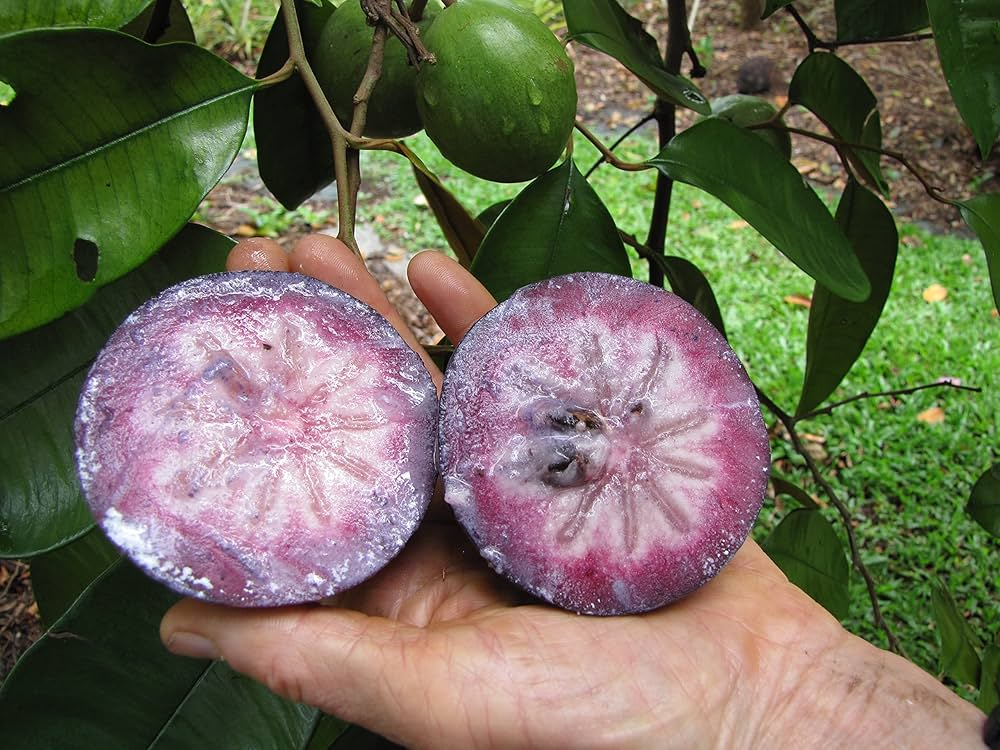
Leaf Yellowing
- Check for overwatering – adjust watering schedule.
- Test soil pH – star apple prefers slightly acidic soil (pH 5.5-6.5).
- Apply micronutrient spray if deficiencies are suspected.
Poor Fruit Set
- Ensure adequate pollination by hand-pollinating flowers.
- Check fertilizer balance – too much nitrogen promotes vegetative growth at the expense of fruiting.
- Confirm tree maturity – seedling trees may take 5-8 years to bear fruit.
Slow Growth
- Evaluate sun exposure – insufficient light leads to weak growth.
- Check for root restriction in containers – repot if necessary.
- Assess soil fertility and amend as needed.
Conclusion
Growing star apple requires patience and attention to tropical growing conditions, but the reward of harvesting your own exotic fruits makes the effort worthwhile. Whether you’re cultivating in a Florida garden or nurturing a potted specimen in a northern greenhouse, adapting these care guidelines to your specific circumstances will help ensure success.
Remember that star apple trees can live for decades with proper care, providing years of ornamental beauty and delicious harvests. By following the guidelines in this comprehensive guide, you’ll be well on your way to becoming a successful star apple grower, no matter where in the US you call home.

